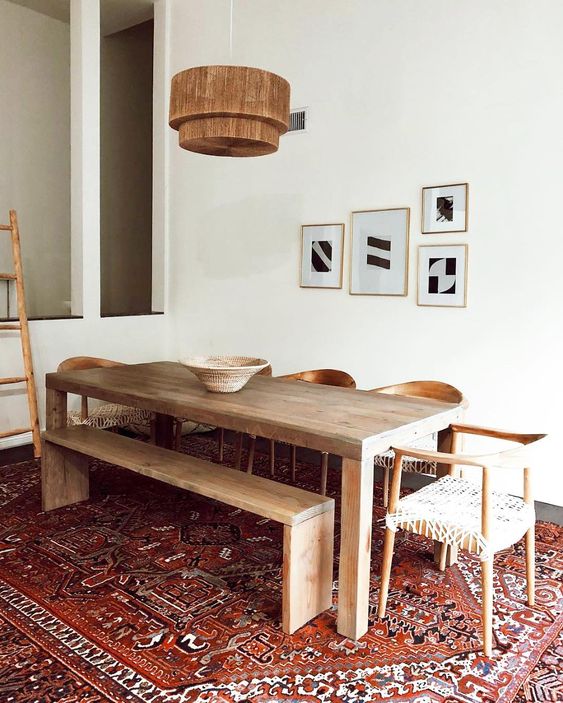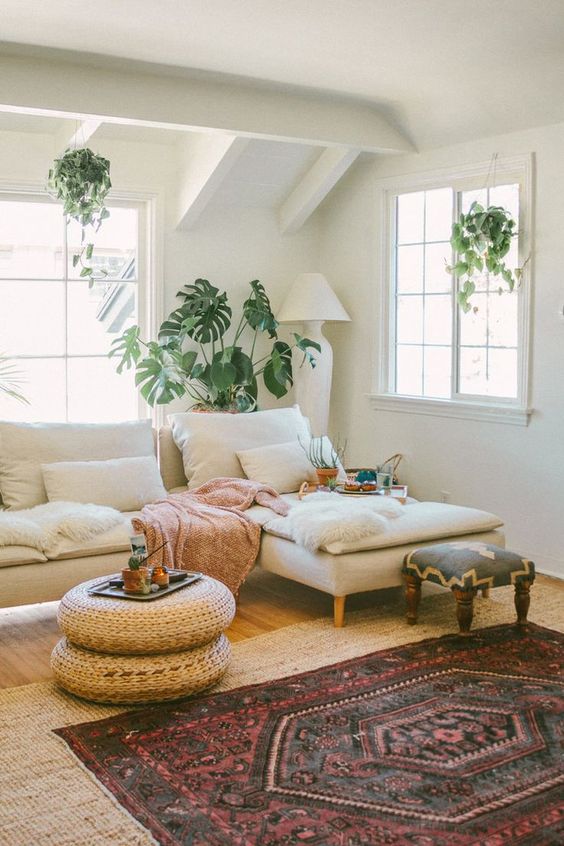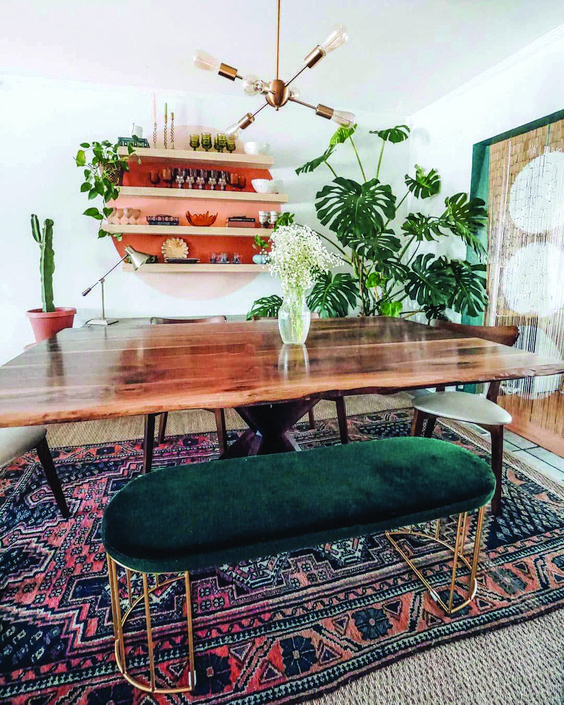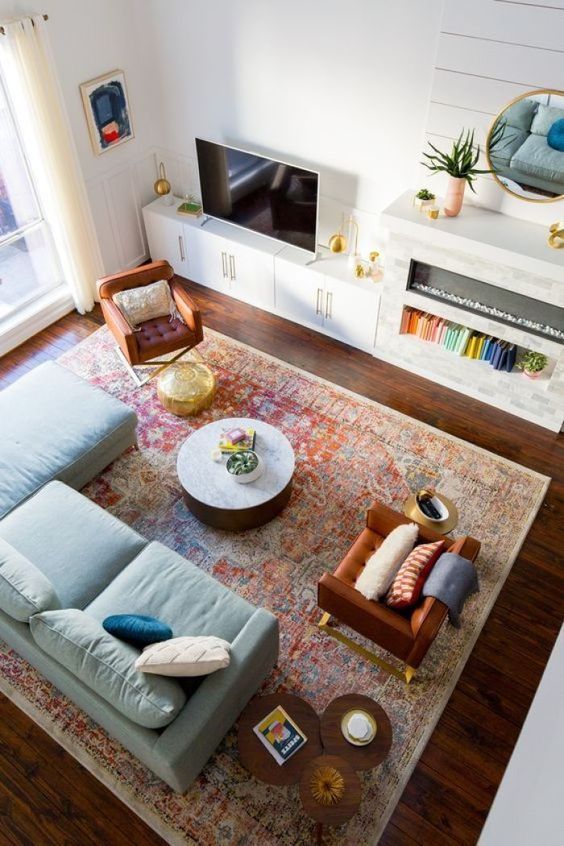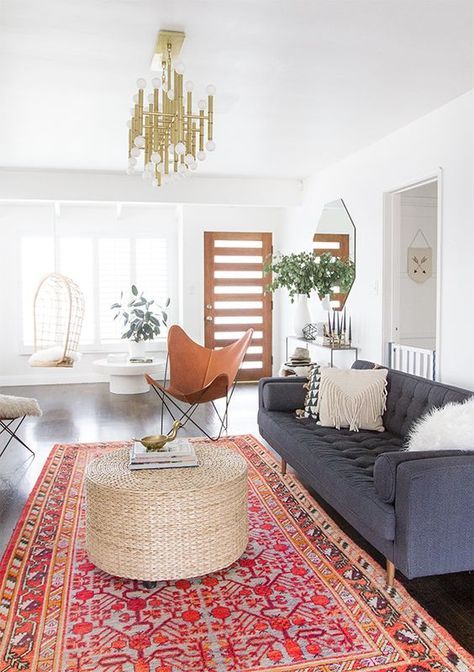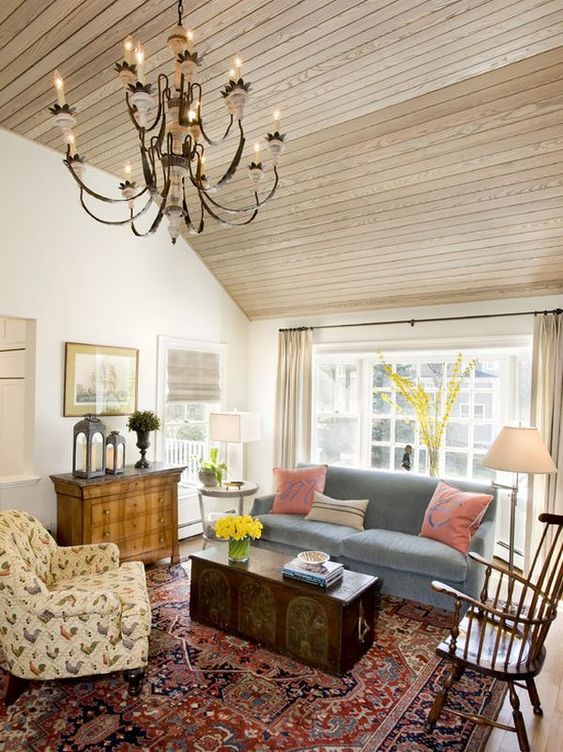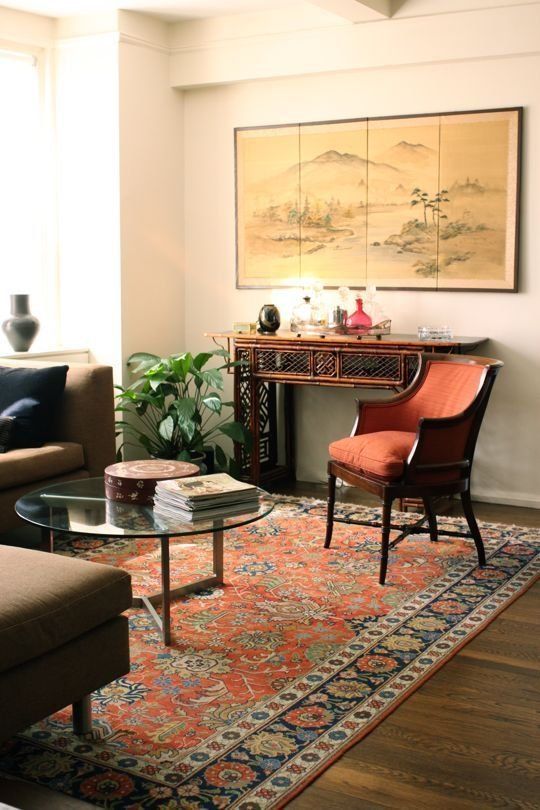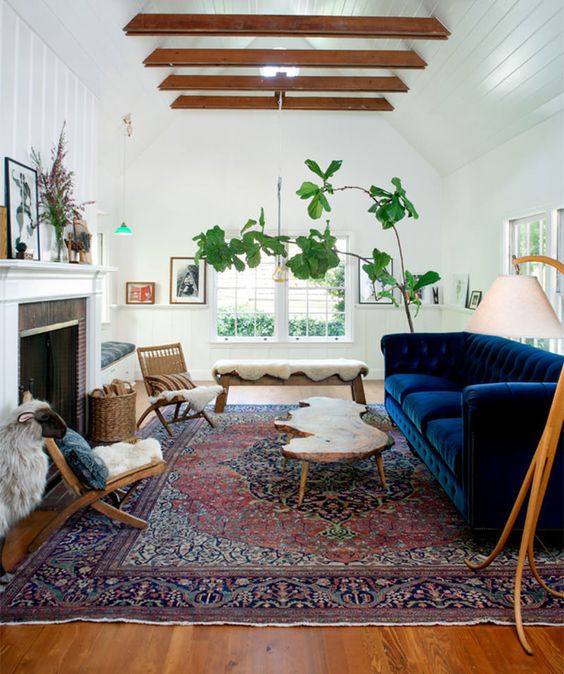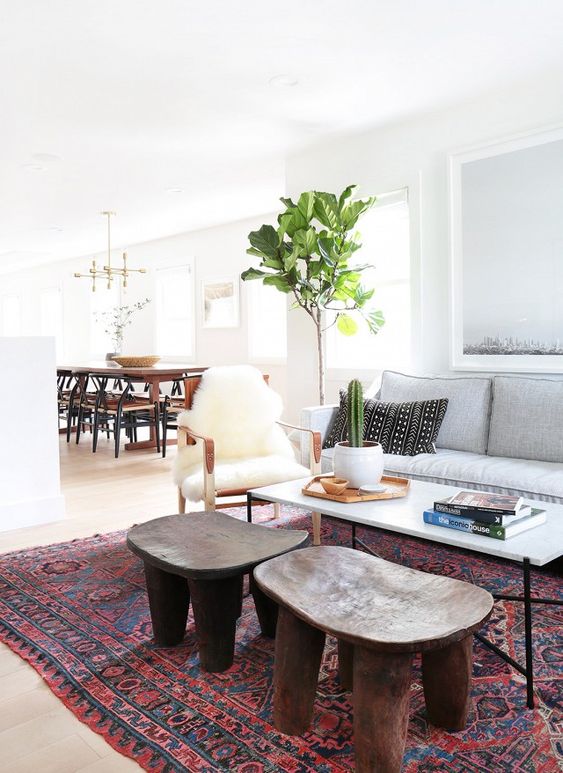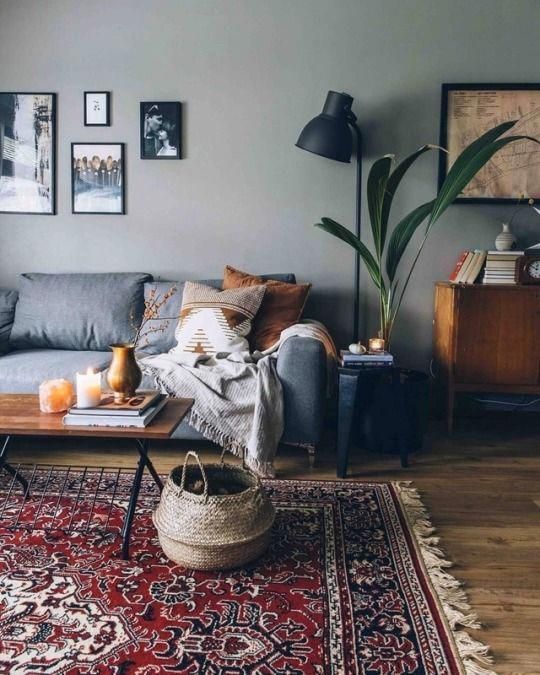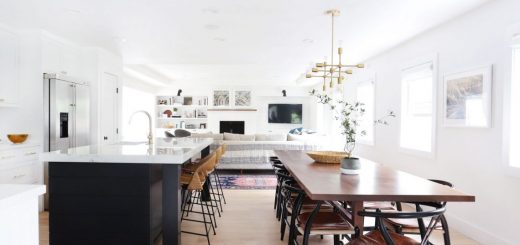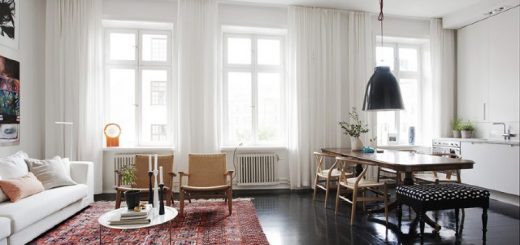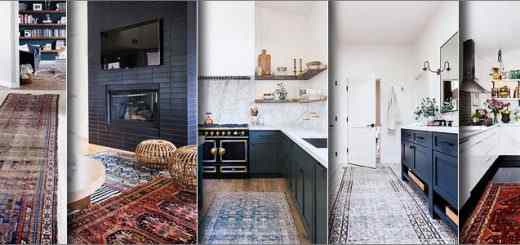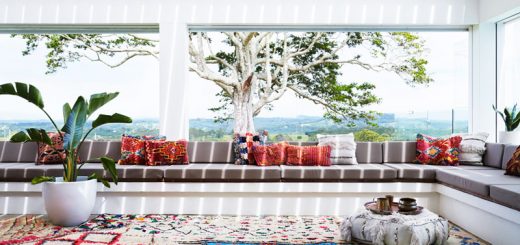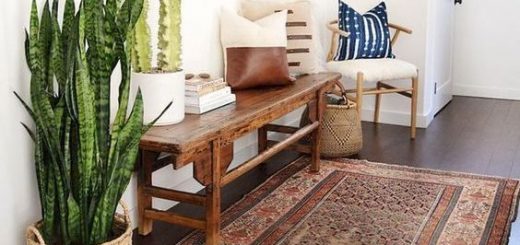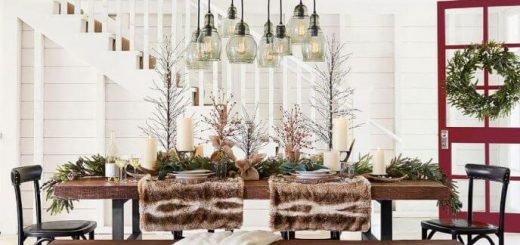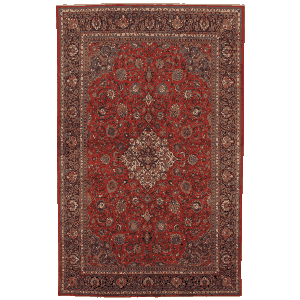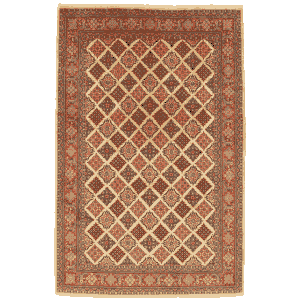The Rug Pyramid: A Practical guide to determining the right oriental rugs for you
The antique Oriental rug market can be daunting at first. The quest to “know” rugs is a journey of gaining exposure, knowledge and discovering your personal taste. To guide our clients, many of whom are art and antique collectors, we created an Oriental Rug Market Pyramid™ to help them to determine which pieces possess an elevated level of beauty, originality and the level of quality appropriate for the sophisticated home as well as being precious tangible assets.
LEVEL 2–HIGH COLLECTIBLE A Connoisseur’s traditional paneled library with consummately crafted, entirely singular Persian Ferahan Sarouk, circa 1850. Marianne Michael Interior Design.
Rankings in our proprietary, six-level pyramid are impacted by a rug’s artistry, craftsmanship, age, and condition, along with the quality of its dyes and materials, and provenance. As the tiers descend, the number of available pieces increases significantly, while the aesthetic mastery and level of innovation generally lessens.
LEVEL 3–CONNOISSEUR CALIBER Oversize 150-year-old Persian Sultanabad carpet in family home of rug connoisseurs in the Hamptons. David Thiergartner Interiors.
THE IMPORTANCE OF ARTISTRY
LEVEL 3–CONNOISSEUR CALIBER
Ferahan Sarouk carpet with highly artful design and exotic color palette, late 19th century
The value of artistry in determining the overall level of a carpet cannot be overstated. For eons, weavers strove through knotting carpets by hand to express a universal unity they believed exists throughout nature and the cosmos. With its complex interplay between harmonious colors and designs, a single rug often was years in the making.
Although they have been embraced in the Western world for their luxury and durability for centuries, the intrinsic artistic impact of these carpets went unappreciated thanks to preconceptions regarding what is and what is not “fine art.” Three years ago, the New York Metropolitan and the Louvre both substantially enlarged their galleries of Near Eastern art, signifying that this attitude was changing.
LEVEL 2–HIGH COLLECTIBLE
Extremely rare “Eagle Kazak” tribal rug from southern Caucasus Mountains,
circa 1850
As a president of a company specializing in second, third and the best of fourth tier rugs for the past 35 years, it has always been clear to me that this evolution would at some point take place. Ironically, now as the artistic value of the best antique rugs is being recognized, their supplies have dwindled to the point where in the great majority of rug galleries they have been replaced by contemporary hand-knotted carpets made in factories throughout the Near East.
Very often, this resulted in rug nomenclature being misused with impunity. No wonder when googling “Oriental carpet” or “Persian rug” you are bound to become confused. Likewise, the term “antique” is misused for rugs that starting in the 1920s were made en masse, using chemical dyes and scripted designs, and bearing little resemblance to the true masterpieces from the 19th century and earlier.
In truth, superlative examples of the artistry of these earlier rugs rarely come up for sale. Thus, most buyers have virtually no opportunity to see them, let alone acquire them.
THE ORIENTAL RUG MARKET PYRAMID
This six-tier pyramid is the result of my three and a half decades of experience as the owner of an internationally recognized rug gallery. It is a concise guide for those who wish to identify the greatly varying levels of quality and artistry to essentially separate the wheat from the chaff of Oriental carpets.

LEVEL 1. MUSEUM-QUALITY HISTORICAL (RUGS AND FRAGMENTS) — FROM THE 13th-18th CENTURIES AND EARLY 19th CENTURY RUGS.
The Persian Safavid dynasty that ruled from 1501–1736 a period now referred to as “The Golden Age of Persian Weaving” thanks to royal-sponsored workshops, produced many of the finest carpets the world has ever seen.
Today, the recognition of the very rarest, well-preserved rugs of this period has dramatically increased. In the past five years, the record price paid for a single antique Oriental rug has risen from $4 million to $9.5 million in 2010. Then, in June 2013, a stunning 17th century Kirman rug sold at Christie’s auction for $33.7 million, over three times the previous record, heralding the arrival of Oriental rugs into the upper echelon of art collecting.
LEVEL 1– 17th century Persian Sickle Leaf Kirman carpet sold at Sotheby’s in June of 2013 for $33.8M (est. $5-$7M), the highest price ever paid in auction for an Oriental rug, more than three times the previous world record price
When they surface, the most precious complete rugs in this category are usually purchased by museums, while specialized private collectors sometimes acquire fragments or intact, less noteworthy 200- to 250-year-old pieces. (It should be noted that age alone does not make a great rug. Every era produced both luminary and less inspired weavers.)
LEVEL 2. HIGH-COLLECTIBLE— PRIMARILY FROM EARLY 19th CENTURY TO CIRCA 1875
Artistic achievement and great originality reign paramount in this rarefied group. While Level 1 historical rugs are typically too fragile and precious, many high-collectible pieces have sufficient durability for floor use. This being said, there is a rapidly growing trend for collectors to also hang them as wall art or hold them in storage.
LEVEL 2–HIGH COLLECTIBLE
Turkish Bergama rug, circa 1800, displayed as wall art.Turkish Bergama rug, circa 1800, displayed as wall art.
These are best-of-the-best caliber rugs that exhibit fluid, subtly varied design and exotic use of nuanced color. They achieve superb aesthetic balance and harmony in the process. The creators of these rugs wove 140 to over 200 years ago and were virtually free from market influence, allowing unfettered expression. This period stands at the height of what I have termed the “Second Golden Age of Persian Weaving” (roughly circa 1800 to 1910).
Included in this elite category are spectacular rugs primarily from Persia and the Caucasus Mountains, along with those from Turkey, India and the Central Asian plateau. These cultural treasures with their primal colors and at times seemingly “modern” graphic designs inspire a powerful international following. For instance, in 2007, a Caucasian “Eagle Kazak” rug sold for $341,625 at Freeman Auction House, Philadelphia. In January 2014, Sotheby’s sold another circa 1800 Eagle for $233,000, over twice its top estimate.
LEVEL 2–HIGH COLLECTIBLE
Sitting room in collector’s home with two compatible Level 2
The best of the rarely found rugs woven in the villages of Northwest Persian Azerbaijan–notably Bakshaish and Camel Hair rugs–are prized for their artistry and unabashed eccentricity. Premier rugs from the tribes of South Persia also inspire avid collection.
LEVEL 2–HIGH COLLECTIBLE
Bedroom of a collector’s condominium presenting a 175-year-old Persian Sultanabad carpet with an extremely rare aqua-hued field on the floor and a Caucasian Lesghi tribal rug on the wall.
Persian town and city weaving excelled at this time as well, particularly in the exquisitely detailed floral rugs of Ferahan, Kashan and Laver Kirman.
LEVEL 3. CONNOISSEUR CALIBER RUGS- PRIMARILY FROM CIRCA 1875-1910
This category encompasses standout rugs from all of the major Persian and tribal groups mentioned above. While not reaching the artistic virtuosity, design fluidity and color nuance displayed in Level 2 high-collectibles, these are also one–of–a–kind antique art rugs that masterfully combine time-seasoned natural dyes with ingenious renditions of traditional patterns.
Because connoisseurs find these to be emotionally satisfying for display on floor and wall, the supply of collectible rugs in this group in extremely good condition has been decreasing for decades.
LEVEL 3–CONNOISSEUR CALIBER
Many connoisseurs display small 19th century rugs throughout their homes, such as the Persian Bakshaish, circa 1850, in this bar area.
In what is known as the “Revival Period,” a greater number of rugs were commissioned in room size and oversize formats in Persian locales such as Tabriz, Kirman, Sultanabad and Heriz, where the ever-popular Serapis were woven. These are the products of highly talented artisans who utilized excellent materials and singular, inspiring designs and color combinations.
Today, a selection of superb examples in quite good condition can be found through a handful of specialty dealers worldwide and the finest offerings of major auction houses.
LEVEL 4. HIGH-DECORATIVE- PRIMARILY 1900 – 1925
LEVEL 2 AND 4–HIGH COLLECTIBLE AND HIGH DECORATIVE A high-collectible Caucasian Khila rug, circa 1850, graces the wall of this exotic sitting room. It is perfectly complemented by a high-decorative circa 1900 Persian Serapi carpet on the floor.
A substantially greater number are still available than in the previous three categories. This is because the escalation of production gained steam during this era, as rapidly growing domestic and international demand increased the number of working looms as well as the disinclination for seasoned enthusiasts to collect these pieces.
LEVEL 4–HIGH DECORATIVE A room size Persian Hadji Jallili Tabriz woven circa 1900 graces the contemporary family room of Silicon Valley rug connoisseurs.
More rugs were woven for export, designs were often simplified and color palettes limited in an effort to satisfy Western decorative taste. Yet aesthetic appeal and originality still play a role in these carpets, as alluring designs combine with hue-shifting color palettes. Synonymous with sophistication and grace, and fitting in seamlessly with a broad range of home decorating styles, both these and Level 3 rugs are widely sought after by 21st century interior designers. They have the power to completely transform, rather than merely accessorize a room.
LEVEL 4–HIGH-DECORATIVE- This suite of three singular late 19th century Persian Sultanabad carpets offers compatible design themes and similar color palettes to create a harmonious ambiance in this home on the California coast. Carla Carstens Designs.
LEVEL 5. DECORATIVE ORIENTAL CARPETS— CIRCA 1920 to 1970
As the decorative rug market in the Western world exploded, most of the resultant weavings fell into this category. The level of materials and craftsmanship decreased notably; innovative artistry was typically replaced by strict adherence to traditional regional patterns, and harsh modern chemical dyes often supplanted more subtle natural dyes.
Newcomers to the Persian city weaving groups include extremely finely knotted Qums and Nains, while a burgeoning number of geometric rugs were woven in Heriz and by the descendants of the Bakhtiari tribespeople.
LEVEL 5–DECORATIVE
Woven circa 1950, a finely crafted Persian Kashan sits in seating area amid a modern art collection. Kimberly Hopper Interior Designs
Some rugs woven prior to 1925 also fall into this category, as they are either damaged, chemically washed, quite irregular in shape, made with garish or fugitive dyes or are simply uninspired works. They have negligible collectible value.
LEVEL 6- REPRODUCTION— TYPICALLY POST 1960 TO THE PRESENT
Mostly either reproductions or adaptations of traditional Persian designs, these are by far the most widely available Oriental rugs today. Although the pieces may be labeled with Persian rug names whose designs they evoke, almost all are woven in India, China, Pakistan, Turkey, Egypt and Romania. Their weavers have no genealogical or cultural connection to the patterns they produce. Thanks to their hand-woven construction and a wide range of colors to complement modern decors, they can be enjoyed as durable home furnishings. Although the craftsmanship of the finest reproductions may be superior some Level 5 Decorative rugs, the artistic inspiration and individuality that gave an Oriental carpet enduring value are simply not present.
LEVEL 6–REPRODUCTION
From a multi-country weaving industry, handmade rugs offer designs loosely based on Persian pattern language and offer trendy colors.
If you wish to purchase a durable hand-woven floor covering with appealing design and color, shops in any major city that carry Level 5 and Level 6 rugs will provide what you’re looking for. If you aspire to enhance your home with great aesthetic and artistic individuality, with something truly distinct and heirloom-worthy, then seek out the handful of galleries that offer selections of Level 3 and 4 rugs.
For those who will settle for nothing less than “the best of the best,” establish a relationship with a reputable, longstanding dealer who can occasionally offer you Level 2 pieces. Or try your luck bidding on Level 1 masterpieces when they surface at major auction houses.

